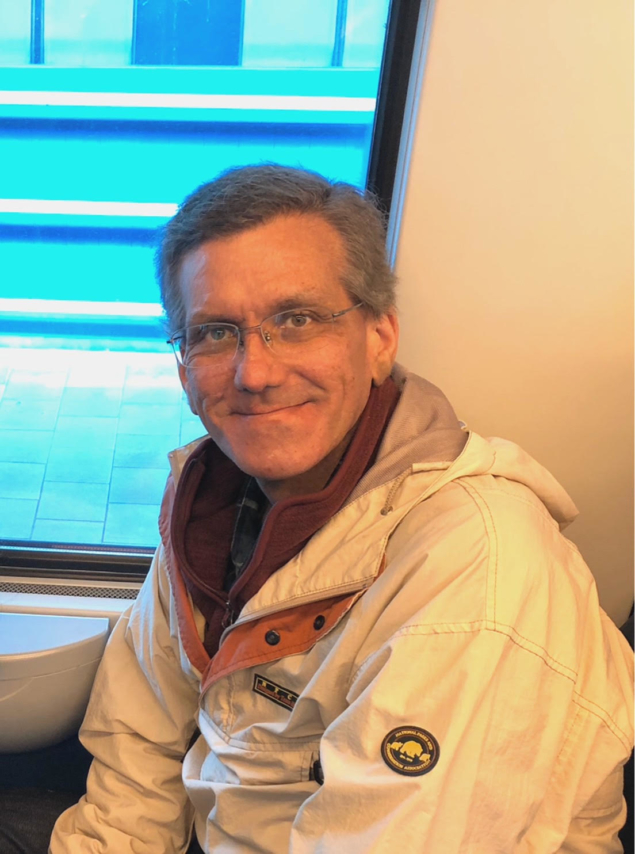
Accelerator physicist John Flanagan, who made important contributions to beam instrumentation for the KEKB and SuperKEKB projects in Japan, passed away on 13 March.
John Flanagan was born in 1964 and grew up in The Valley of Vermont, attending Philips Academy and graduating from Harvard University in 1987 with a degree in physics, astronomy and astrophysics. After working for a few years at software companies and at the Space Sciences Laboratory at Berkeley, he attended graduate school in physics at the University of Hawai’i at Manoa in 1992. Emeritus professor Steve Olsen recalls: “John was one of our best ever graduate students at the UH. Although he was initially attracted to Hawaii because of his love for scuba diving, his deepest dive as a grad student was to the bottom of the Super-Kamkiokande water tank.”
John joined the Super-Kamkiokande experiment at an early stage. He was a beloved member of the construction team and quite a favourite of the miners at Kamioka, who presented him with the snake’s beating heart at the mine-tunnel dedication. John took the first data-taking shift on the experiment on 1 April 1996 and the following year married Mika Masuzawa, who was at that time a postdoc from Boston University working on the Super-K construction. This was around the time John completed his thesis on the first observation of atmospheric neutrino oscillations at Super-Kamkiokande, supervised by John Learned. After completing his PhD, he moved back to Japan and was a research fellow in the KEK accelerator division. His talent was quickly recognised. He was appointed as an assistant professor in 1999, an associate professor in 2008 and promoted to full professor in 2016.
He was also known for his activities on gender-equality issues
A world-leading accelerator physicist, John was well known for his immense contributions to the KEKB and SuperKEKB projects. His work on the photoelectron instability, monitoring of the beam size via synchrotron radiation light and X-rays, and feedback systems played a key role in KEKB’s achievement of the world highest luminosity at an electron-positron accelerator. Flanagan-san (sometimes nicknamed “furigana-san”) participated in nearly every aspect of the construction, monitoring and operation of KEKB. He is most celebrated for his outstanding work on the synchrotron radiation (SR) light monitor using interferometery, which allows real-time measurement of micron-level beam sizes. For SuperKEKB, he greatly improved the SR monitor by using a diamond mirror; this eliminated the systematics from thermal expansion of the mirror that had plagued the SR monitoring system in KEKB.
John also led work on the remediation of the electron-cloud effect, in particular concerning the onset of the electron-cloud blowup and its relation to the head-tail instability, which has been quite visible in the global accelerator community. In addition to being one of the key accelerator problems for KEKB and SuperKEKB, a solution to the electron-cloud problem is also needed for successful operation of the damping rings for the future International Linear Collider. Finally, he developed an innovative X-ray beam profile monitoring technique by adapting techniques from X-ray astronomy and using innovative high-speed electronics. John carried out early tests of the system in collaboration with colleagues at CESR-TA (Cornell Electron Storage Ring Test Accelerator) in Cornell and at the ATF2 (Accelerator Test Facility) at KEK. He also developed a collaboration with SLAC and the University of Hawai’i within the framework of the US-Japan Cooperation Program in High Energy Physics. In the near future, an upgraded version of this X-ray monitor will be used to realise John’s dream of bunch-by-bunch measurements of small vertical beam sizes.
In addition to his fluent command of the Japanese language and understanding of Japanese manners, John was a modest and kind person who was beloved by his colleagues in the KEK accelerator division and by those on the Belle and Belle II experiments. He was also known for his activities on gender-equality issues including participation in the Japanese Physical Society taskforces and committees as well as serving as an instructor at the Rikejo science camp for high-school girls.
John is survived by his wife, a professor at KEK, and by his daughter Mariko. We will all remember him with the greatest respect as a splendid person, as innovative scientist, and someone who we are very proud to have had the opportunity to work with.








